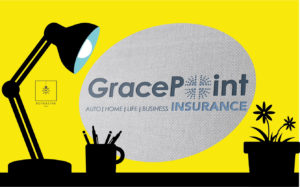Basic programming and logic skills are no longer a niche skillset. Most people who learn basic computer logic skills can put those skills to use in everyday circumstances. With basic programming and logic skills Microsoft Excel functions seem less like spreadsheet wizardry, troubleshooting your home machine becomes less aggravating, and tweaking some of the HTML for your blog isn’t nearly so intimidating. Programming and logic skillsets also help develop organizational and problem solving skills. Yet most educational systems still aren’t teaching such concepts to students.
So we are starting to teach the concepts to our children early. There are some things we can begin teaching even our 2 year old daughter that will be invaluable later. Yet we don’t want her glued to a screen. Her parents are on their computers most of the day – she doesn’t need to be yet. So we are using books and toys to teach some simple concepts early without the use of actual computers. Logic skills and technical terms don’t require a computer to teach.
Logical Problem Solving
For Christmas 2016 we bought our daughter the Fisher-Price Code-a-pillar. She was scared of it at first but has since come around to this adorable caterpillar with flashing lights. This toy has different segments each with its own color and command – such as “turn right” or “stop and sing a song”. Each segment connects to the rest of the toy caterpillar through a USB port. Our children can rearrange the caterpillar’s segments to make it do different things and navigate around different rooms and obstacles.
The Code-a-pillar is about as simple as a programming toy can get. It doesn’t teach if-then-else type logic but it does teach sequential logic and using sequential commands to make the machine accomplish a desired task. It is just enough logic skills to stretch a toddler while also being flashing singing fun. Learning these logic skills early will lay the foundation for future lessons and skillsets. The Code-a-pillar is also tactile and lacks a screen. Our children physically take it apart and put it back together in the way they want. This gives physical context to the conceptual logic they don’t yet realize they are learning.
Web Terms
We are also teaching our children web-development terms with books like ABCs of the Web: An Alphabet Primer for Young Developers in Training. Our two-year-old isn’t yet browsing the web but she is learning that a “browser looks for keywords on the internet tree”. She is learning that HTML makes up a webpage, that links are shortcuts between webpages, and that “open source” is sharing code with one another. She isn’t yet clicking links and she may never share her own code but understanding these terms will help her navigate the technological world ahead of her. As she grows up and hears her parents discussing “SEO” she will have some idea that we make websites easier to find.
Children begin learning English long before they can read and write. Children can begin learning the language of the Internet long before they rest their fingers on a keyboard.
Start Early
You don’t have to wait until they can type to teach your children basic and age appropriate programming skills. You can begin teaching them as soon as they can play or flip through a picture book with Mommy. You don’t even need to know much programming yourself to get your kids started. Purchase some applicable STEM toys and grab a few educational board books. Most importantly – be willing to learn with them.



